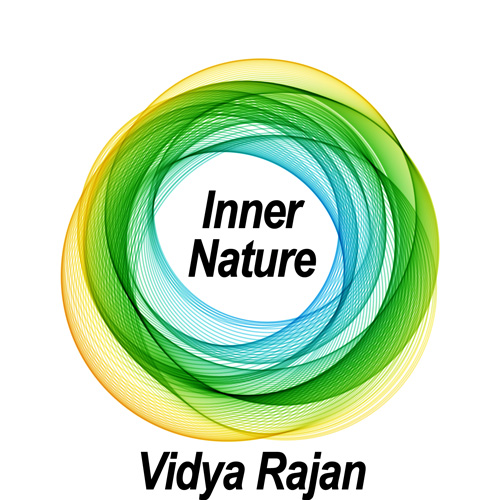By Vidya Rajan, Columnist, The Times
 Two books released over the last two years: Lars Chittka’s “Mind of a Bee” and Stephen Buchmann’s “What a Bee Knows: Exploring the Thoughts, Memories and Personalities of Bees” have thrown into turmoil the question of sentience – the capacity for feelings – of honeybees, and whether we humans truly understand the capabilities of minds that operate on scales and using processes profoundly different from our own. 200 years ago the utilitarian philosopher Jeremy Bentham said about sentience, “The question is not Can they reason? nor, Can they talk? but Can they suffer?”[1] By using this construction, a sophisticated philosopher like Bentham is implying that sentience relates to a scaling of responses: that reasoning and talking are closer to people’s notion of sentience than the capacity to feel pain. Bentham seeks to lower that bar to include pain.
Two books released over the last two years: Lars Chittka’s “Mind of a Bee” and Stephen Buchmann’s “What a Bee Knows: Exploring the Thoughts, Memories and Personalities of Bees” have thrown into turmoil the question of sentience – the capacity for feelings – of honeybees, and whether we humans truly understand the capabilities of minds that operate on scales and using processes profoundly different from our own. 200 years ago the utilitarian philosopher Jeremy Bentham said about sentience, “The question is not Can they reason? nor, Can they talk? but Can they suffer?”[1] By using this construction, a sophisticated philosopher like Bentham is implying that sentience relates to a scaling of responses: that reasoning and talking are closer to people’s notion of sentience than the capacity to feel pain. Bentham seeks to lower that bar to include pain.
It has been assumed that a body must contain nerves and sensory organs to experience pain. But despite their absence, Stefano Mancuso has no doubts that plants feel pain. He has treated plants with anesthetics and demonstrated a loss of touch sensation in Mimosa (touch-me-not plants), pea tendrils, sundews and Venus flytraps due to the loss of action potentials in a manner analogous to the way anesthetics work on nerves. [2]
Furthermore, he suggests that this resembles going from a conscious to an unconscious state, although he admits demonstrating consciousness in plants is more challenging.[3] Lesser claims have been supported for plants responding to damage. Plants subjected to herbivore stress release volatile organic compounds and nearby plants respond to those VOCs by making antifeedant molecules. Others have demonstrated that plants show responses that parallel animals’ responses: Despite not having nerves when subjected to leaf removal, mustard plants demonstrate a spike in the inhibitory neurotransmitter, glutamate, at the point of leaf separation.[4]
As in animals, the glutamate spike sets off the release of calcium ions which mediates physiological responses within the plant. To reiterate: in animals, glutamate is a neurotransmitter, released by nerves as a communication device. Plants have no nervous system, yet they have the same chemical pathway. This indicates that the glutamate-calcium pathway predates the animal-plant divergence. Another mechanism that plants use to communicate stresses such as dehydration, leaf-damage and radiation are ultrasonic sounds made by cavitation. This is a physical phenomenon (rather than a chemical one) where air bubbles trapped in vasculature pop audibly.[5] Remarkably, however, the popping sounds are distinct for each kind of stress and artificial intelligence systems trained on various auditory signals can distinguish between the different types of stresses experimentally induced in greenhouse plants. Thus plants physiologically distinguish between stimuli, but it is a stretch to call the sensation of pain as we understand it.
To animals then. Animals close to us on the evolutionary scale like great apes and even dogs are known to feel pleasure and pain. That is not so surprising – they are vertebrates, and their nervous system is quite similar to our own. Studying invertebrates may shed more light on sentience, since their nervous systems have no resemblance to our own. Disregarding in this essay the complications that sponges and jellyfish introduce, even simple animals like earthworms produce physiological analgesics and active movement away from painful stimuli. They also have a capacity to remember, which is often termed instinct, because we do not have the ability to probe the emotional state of these animals.
Animals like the octopus can sense stimuli with receptors in their arms without the involvement of the brain. But, as revealed in the documentary “My Octopus Teacher”, octopuses respond with behavioral and skin pattern changes to pain and pleasure. The octopus which is the subject of this documentary also seems to just have fun playing with a school of fish. To assess emotional responses in octopuses in manner analogous to studying emotions in vertebrates, Robyn Crook from San Francisco State University carried out an experiment where an octopus was shown two chambers decorated with different wallpaper. After it had selected one, it was allowed to settle down in it. When the octopus was asleep, researchers injected acetic acid into one of the arms causing the octopus to wake up in distress. The octopus was then removed to another chamber and a topical anesthetic was applied to relive the pain. The octopus was then brought back to the two chambers and allowed to select one to go into. Invariably the octopus rejected its initially preferred chamber – the one in which it had been subjected to the acetic acid injection – choosing the other chamber instead.[6] This result held up with multiple octopus subjects. This shows the octopuses’ recognition of the connection between experiencing a painful stimulus and the environment. That it was pain the octopuses were feeling is inferred due to the relief they experienced when they were given an anesthetic. How they learn to associate the stimulus with the location is less clear. In vertebrates, a region called the amygdala has been pinpointed as the region that registers emotions. The amygdala lies alongside the hippocampus, which is where learning happens. But conventionally, an animal that is able to connect emotional responses such as fear and pleasure with sensations, choosing to withdraw from painful stimuli and seeking out pleasurable ones may be regarded as sentient.
Bees have recently been added to the list of animals that experience an emotional reaction to pain, as alluded to at the beginning of this article. In an experiment with echoes of Crook’s octopus experiment, Lars Chittka used a robotic spider which was used to briefly grab and release bees as they were visiting flowers. Grabbed bees showed heightened surveillance behavior and, Chittka says, exhibited symptoms of PTSD such as perceiving threats where none existed. On the other hand, bees which were given an unexpected sugary treat showed higher levels of the pleasure neurotransmitters dopamine and serotonin, and levels decreased when bees were shaken or otherwise stressed. Buchmann and Chittka also argue for bees’ self-awareness and emotions. And bees’ ability to suffer, meeting Jeremy Bentham’s minimum parameter for sentience.
There are other ways to think of sentience, of course. Affection for another of the same species or a different species; love for a partner or a child; self-recognition in a mirror; grief and attendant commemorations of another’s passing seen often in birds (crows) and mammals (orcas, elephants, great apes). [7] And then my personal experience of trying to smack a pesky mosquito a few days ago had me question the mosquito’s evasive response when my eyes landed on it and it flitted away before I could even move a muscle. Why would this happen were the mosquito not aware of the connection between being watched and being hurt? Maybe this was a self-preservation instinct, but if the animal could not distinguish between itself and others, would it even recognize the concept of self-preservation? This mosquito showed the ability to anticipate and evade an act performed by someone else (me) that would cause it pain.
It may not have suffered yet, but it knew I would whack it given a chance. I might add to Bentham’s list of sentient behaviors the list above and one that I haven’t seen discussed elsewhere: the capacity to anticipate and attempt to evade potentially painful events.
[1] Bentham, Jeremy. “A utilitarian view.” Animal rights and human obligations (1789): 25-26.
[2] K Yokawa, T Kagenishi, A Pavlovič, S Gall, M Weiland, S Mancuso, F Baluška, Anaesthetics stop diverse plant organ movements, affect endocytic vesicle recycling and ROS homeostasis, and block action potentials in Venus flytraps, Annals of Botany, Volume 122, Issue 5, 5 October 2018, Pages 747–756, https://doi.org/10.1093/aob/mcx155
[3] Fox, Killian. “Botanist Stefano Mancuso: ‘You Can Anaesthetize All Plants. This Is Extremely Fascinating.’” The Guardian, April 17, 2023. https://www.theguardian.com/environment/2023/apr/15/scientist-stefano-mancuso-you-can-anaesthetise-all-plants-this-is-extremely-fascinating-tree-stories.
[4] Pennisi, Elizabeth. Plants Communicate Distress Using Their Own Kind of Nervous System. Science, September 13, 2018. https://doi.org/10.1126/science.aav4161
[5] Khait, Itzhak, Ohad Lewin-Epstein, Raz Sharon, Kfir Saban, Revital Goldstein, Yehuda Anikster, Yarden Zeron, et al. “Sounds Emitted by Plants under Stress Are Airborne and Informative.” Cell 186, no. 7 (March 1, 2023): 1328-1336.e10. https://doi.org/10.1016/j.cell.2023.03.009.
[6] Blaustein, Anna. “Octopus ‘Teachers’ Demonstrate They Feel Emotional Pain.” Scientific American, April 23, 2021. https://www.scientificamerican.com/article/octopus-teachers-demonstrate-they-feel-emotional-pain/.
[7] Cormier, Z. The truth about animal grief. BBC Earth. https://www.bbcearth.com/news/the-truth-about-animal-grief






